Restoration Work on a Damaged Kakejiku Requested from the U.S.
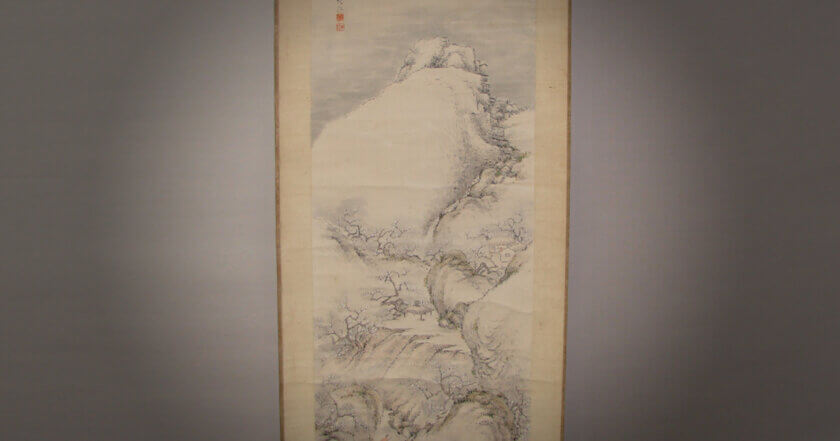
Restoration Work on a Damaged Kakejiku Requested from the U.S.
We have received all sorts of requests regarding kakejiku from home and abroad.
The varied demands range from purchasing, mounting, and restoring kakejiku to buying the material.
On this article, I’m talking about an episode where we received a request of a restoration work on a kakejiku owned by a male customer in the U.S.
Restoration Request for a Kakejiku the Customer Treasures
The customer of this episode has been concerned about damages on a kakejiku he treasures that he came across with and bought during his stay in Japan for a year from 2006 to 2007.
Here is the kakejiku, we provided consultancy service this time.
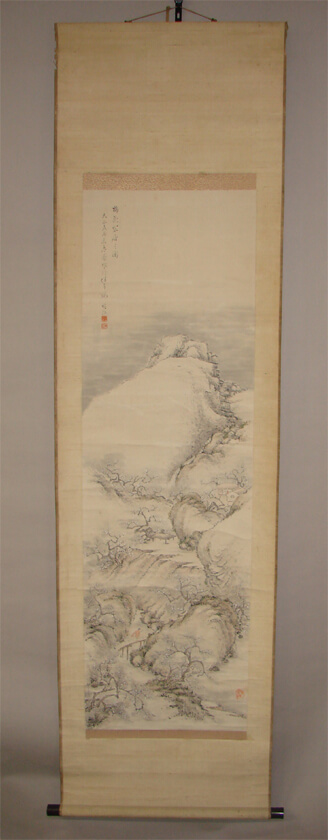
The damage doesn’t seem too bad still creases began to show and dirt covers all over the piece vaguely.
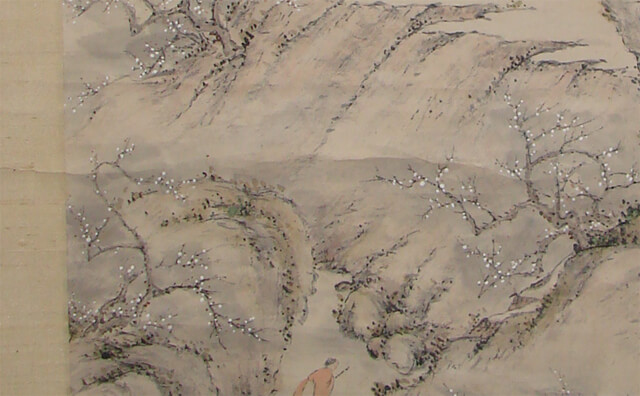
The Majority of our customers take an action for restoration after their kakejiku is gravely worn out which is not recommended as being in the stage, it can be too late to be restored. It’s best to consider the maintenance sooner when any problem is found like the customer of this chapter did.
Consultation on the Remounting
The customer gave the impression of contacting us with his desired mounting pattern once he had the concrete idea by his thorough check on our website.
The picture below is the mounting style the customer ordered called ‘Shin-no-sō’.
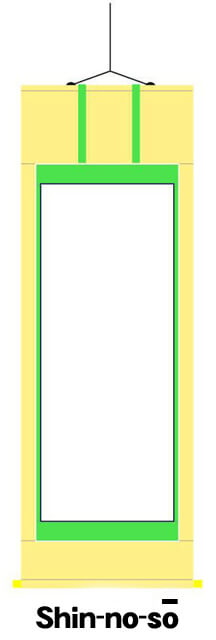
In Japan, this style is commonly used when mounting a piece which associates with Buddhism. However, it would be also exceptionally used for prestigious centerpieces.
The case this time is one of those exceptions where the style is selected out of owner’s thought of cherishing their piece dearly.
The design the customer has chosen.
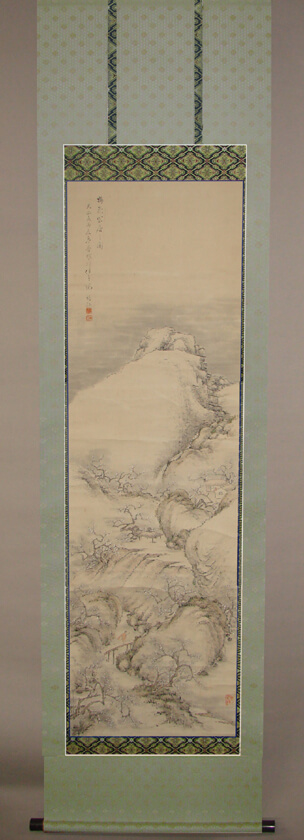
The fabric arrangement with feeling of tranquility and daintiness.
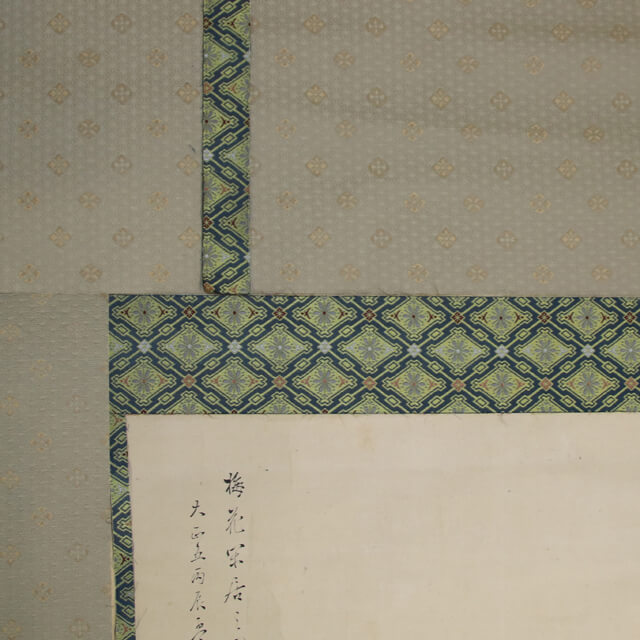
We took his request to slightly shorten the height of the piece. Now then, we are getting down to the restoration while considering the demand.
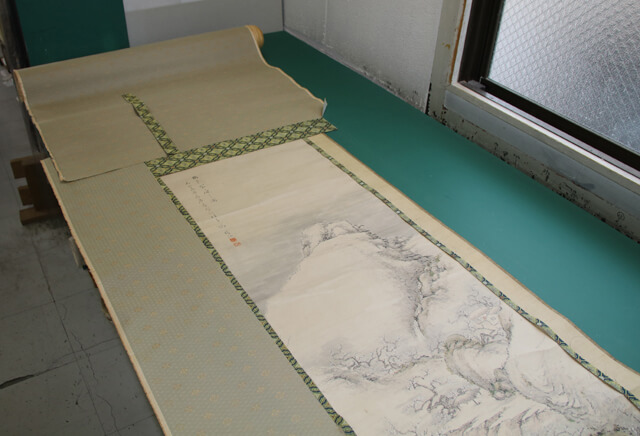
Repair Process
The rough flow of remounting operation for this time is as follows:
Color Fixing (Settling the paint by applying chemical agent)
↓
Dismantling of Kakejiku (Removing old fabrics, roller rod, etc.)
↓
Removal of Old Backing Paper (Peeling off the old backing paper from the back of the main work)
↓
Cleaning (Cleaning the main work as best as possible by using chemical agent)
↓
Hada-urauchi (Applying the first backing paper on the back of the main work)
↓
Orefuse (Reinforcing by applying long narrow Japanese papers on the back of the first backing paper)
↓
Remounting (Remounting in kakejiku with the fabric which the customer has chosen)
We Are Finished with the Restoration
Having completed the lengthy restoration process, at last, the remounting of the kakejiku was brought to completion. Here is the one.

As well as the dirt, the distractive creases have been cleared and the piece took a new
lease of life.
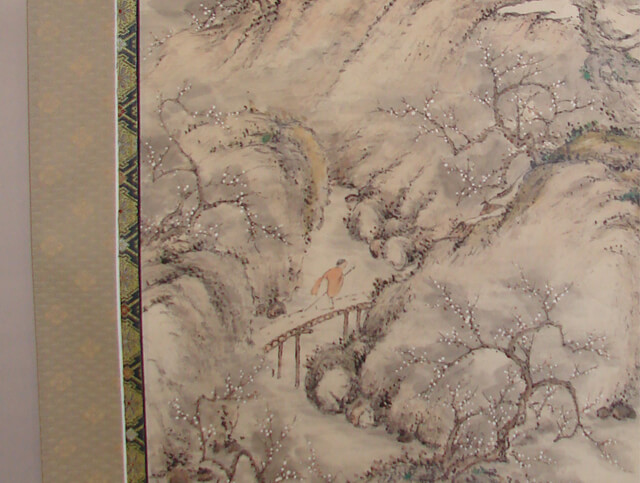
The artwork creating a sober ambient painted in ink is well enhanced by the mounting fabric retaining an exquisite balance.
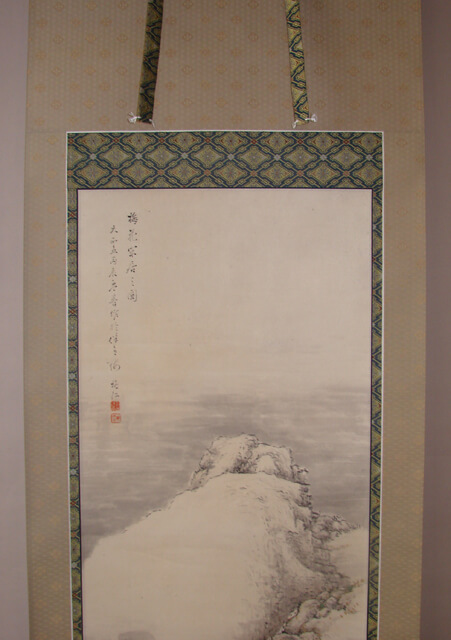
The Feedback of the Customer
The piece was immediately sent to the U.S. and the customer returned us with his message which made us feel absolutely delighted.
Nomura-San,
My scroll arrived in the mail yesterday. Everything was in perfect condition.
Arigato Gozaimasu, Nomura-San. The remounting and cleaning you did was beautiful. I unrolled the scroll and was shocked by the improvements.
I have seen many kakejiku in my time and travels throughout Japan, and thanks to the work of you and your talented employees, I think my scroll is one of the most beautiful I’ve ever seen and captures a wonderful emotion and experience of Japanese culture.
The painting’s colors are so much brighter and the materials used coordinate masterfully.
The painting is currently at the house of my parents. It matches the aesthetics of their dining room and house much better than my own.
It’s pure bliss that he was very much satisfied with the finished state.
We take great pride in the fact that our expertise is appreciated all the way in the U.S.
We provide consultancy service regarding restoration for kakejiku internationally as you see the episode this time. Please feel free to contact us if you have any concern over remounting.

